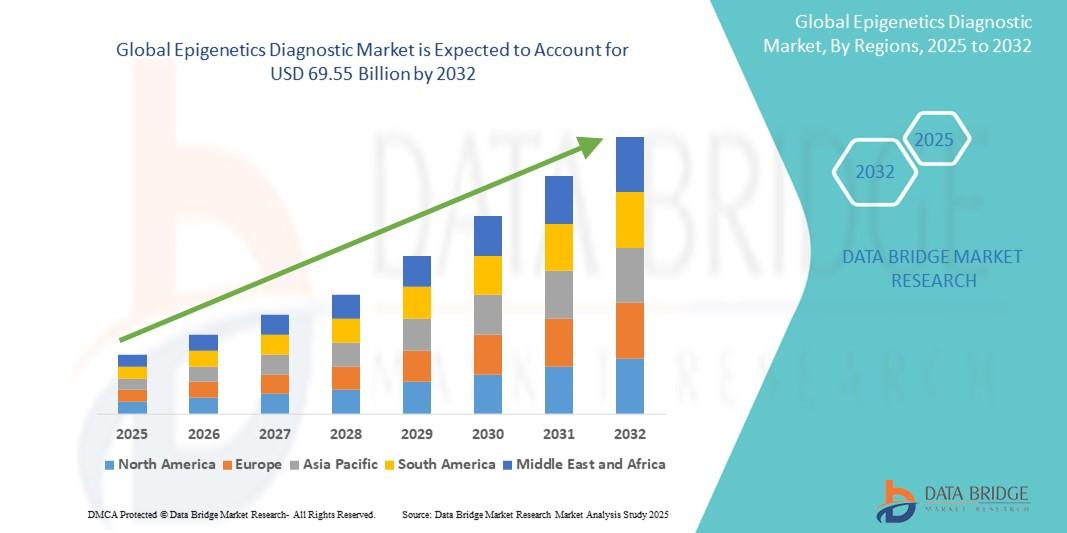Citric Acid Market Size, Share, Trends, Key Drivers, Demand and Opportunity Analysis
Executive Summary
- The global citric acid market size was valued at USD 7.07 billion in 2024 and is expected to reach USD 11.20 billion by 2032, at a CAGR of 5.92% during the forecast period
Market Overview
Citric acid ($C_6H_8O_7$) is a weak, tribasic organic acid naturally found in citrus fruits. Commercially, it is produced almost exclusively through the submerged fermentation of carbohydrate substrates (such as corn starch, molasses, or beet pulp) using the mold Aspergillus niger. Its primary functions across industries include acting as an acidulant (sour flavor), a preservative (antimicrobial properties), and a chelating agent (sequestering metal ions).
Key Segments and Applications
-
Application:
-
Food & Beverage (Largest Share): Used extensively as a flavor enhancer, acidity regulator, and preservative in soft drinks, fruit juices, confectionery, jams, and processed dairy products. The rapid urbanization and Westernization of diets, particularly in developing economies, underpin this segment's dominance.
-
Pharmaceuticals & Nutraceuticals: Functions as a pH adjuster, an antioxidant in formulations, and a crucial excipient in effervescent tablets. Furthermore, its salts (citrates) are vital in blood preservation and mineral supplements (e.g., magnesium citrate).
-
Industrial & Household Detergents: Used as a water softener, replacing phosphates in laundry detergents and household cleaners due to its effective chelating properties and superior environmental profile (biodegradability).
-
Other Applications: Includes use in cosmetic formulations, textile dying, metal finishing, and construction materials (concrete additives).
-
-
Product Form: Anhydrous (primarily used in dry mixes and tablets) and Monohydrate (often used in liquid solutions and syrups).
Market Drivers and Dynamics
-
Growing Demand for Processed and Convenience Foods: The shift in consumer lifestyles and busy schedules globally continues to fuel demand for packaged and shelf-stable food products, where citric acid is essential for preservation and flavor stability.
-
Replacement of Phosphates in Detergents: Regulatory bans and voluntary phasing out of phosphates in many regions, especially North America and Europe, have significantly bolstered demand for citric acid as a cleaner, biodegradable chelating alternative.
-
Rise in Functional and Sports Beverages: The trend toward health and wellness drives the demand for effervescent, fortified, and 'better-for-you' drinks, where citric acid is a key ingredient for both flavor and vitamin stability.
-
Raw Material Price Volatility: The market is sensitive to the prices of fermentation feedstocks (corn starch and molasses), leading to cyclical fluctuations in the cost of goods sold (COGS) for manufacturers.
Market Size & Forecast
- The global citric acid market size was valued at USD 7.07 billion in 2024 and is expected to reach USD 11.20 billion by 2032, at a CAGR of 5.92% during the forecast period
For More Information Visit https://www.databridgemarketresearch.com/reports/global-citric-acid-market
Key Trends & Innovations
1. Shift to Non-GMO and Sustainable Sourcing
A paramount trend is the increasing consumer and industrial preference for Non-Genetically Modified Organism (Non-GMO) verified citric acid, especially in North America and Western Europe. This necessitates manufacturers to utilize certified non-GMO feedstocks (like specific strains of beet molasses) and maintain rigorous supply chain segregation, thereby increasing production complexity but justifying a price premium.
2. Biorefinery Integration and Waste Utilization
Innovative research is focusing on integrating citric acid production into circular economy models. This involves utilizing agricultural by-products and waste streams (e.g., fruit peels, potato processing waste, pineapple waste) as fermentation media. This not only reduces raw material costs and volatility but also addresses environmental sustainability goals, aligning with global green manufacturing standards.
3. Advanced Fermentation Technologies
While submerged fermentation remains the industry standard, continuous process optimization is a key focus. Companies are investing in:
-
Solid-State Fermentation (SSF): Offers advantages in reducing wastewater and higher product concentration, making it a viable option for small-to-medium scale producers and niche markets.
-
Advanced Bioreactors: Utilization of high-efficiency bioreactors (e.g., air-lift and fluidized bed bioreactors) to maximize Aspergillus niger growth and yield, reducing batch times and energy consumption.
4. Expansion into Bio-based Polymers
Citric acid is being explored as a sustainable, non-toxic cross-linking agent and monomer in the production of bio-polymers and bio-plastics. This represents a significant, long-term opportunity, positioning citric acid as a key component in the shift away from petroleum-based plastics.
Competitive Landscape
The global Citric Acid market is characterized by a high degree of consolidation, with a handful of multinational players dominating production and global supply. Pricing power is generally moderate, heavily influenced by overcapacity in China and the price of key carbohydrate feedstocks.
Major Players and Market Share (Simulated)
|
Company |
Headquarters |
Key Strategy |
Estimated Market Share (2024) |
|---|---|---|---|
|
Cargill, Incorporated |
USA |
Global supply chain integration, diversified feedstock sourcing (corn). |
High |
|
Jungbunzlauer Suisse AG |
Switzerland |
Focus on high-quality, non-GMO, and specialized products for F&B and Pharma. |
High |
|
Archer Daniels Midland (ADM) |
USA |
Vertically integrated from feedstock (corn) to final product. |
Moderate to High |
|
Gadot Biochemical Industries Ltd. |
Israel |
Specialization in pharmaceutical and high-purity grades. |
Moderate |
|
Weifang Ensign Industry Co., Ltd. |
China |
Massive production scale, highly cost-competitive operations. |
High |
Competitive Strategies
-
Vertical Integration: Major Western players (Cargill, ADM) leverage their control over feedstock supply (corn/molasses) to mitigate price risk and maintain production efficiency.
-
Capacity Expansion and Cost Leadership: Chinese manufacturers (e.g., Ensign, RZBC) prioritize massive scale and efficient processing to secure a global cost leadership position, often dominating the commodity grade segment.
-
Product Differentiation: European manufacturers (Jungbunzlauer, Gadot) focus on high-purity, non-GMO, and specialized granulated forms to capture premium segments in the pharmaceutical and clean-label food sectors.
-
Regional Hubs: Companies are strategically establishing production/distribution hubs closer to high-growth consumption markets (e.g., Southeast Asia) to reduce logistics costs and increase responsiveness (Source 3).
Regional Insights
1. Asia Pacific (APAC) – Market Leader and Growth Engine
APAC commands the largest market share and is projected to exhibit the highest CAGR.
-
Drivers: Rapid expansion of the processed food and convenience sector in India, China, and Southeast Asian nations; high population density and increasing per capita consumption of packaged beverages; and the establishment of major, low-cost citric acid manufacturing hubs in China.
-
Opportunity: Investment in localized, smaller-scale non-GMO plants to cater to regional consumer demand for quality differentiation away from commodity Chinese supply.
2. North America (NA) – Mature and High-Value Market
North America is a significant revenue generator, characterized by its focus on high-purity and specialized applications.
-
Drivers: Stringent FDA and USDA regulations ensuring quality for food and pharmaceutical grades; robust demand from the nutraceuticals (supplements) and pharmaceutical industries; and the complete shift to phosphate-free detergents.
-
Dynamics: Market growth here is largely volumetric, driven by product innovation and high-value exports rather than sheer capacity expansion.
3. Europe (EU) – Regulatory Compliance and Innovation Hub
The European market is mature and highly regulated, driving innovation in sustainable production.
-
Drivers: The strong presence of the pharmaceutical industry; stringent environmental regulations mandating the use of biodegradable chelating agents; and strong consumer preference for organic and non-GMO food additives.
-
Focus: European firms are leaders in non-GMO and ethical sourcing, creating a competitive edge in high-end specialty markets.
Challenges & Risks
1. Raw Material Price Volatility and Supply Risk
The market's reliance on agricultural commodities (corn, molasses, tapioca) exposes manufacturers to seasonal fluctuations, extreme weather events, and global supply chain disruptions, impacting production costs and profitability margins.
2. Environmental and Regulatory Scrutiny
While citric acid is inherently biodegradable, the manufacturing process generates significant amounts of effluent and fermentation waste.
Increased regulatory pressure in China and other large manufacturing hubs regarding wastewater treatment and sludge disposal poses substantial operational costs and risks of temporary plant shutdowns.
3. Global Overcapacity and Price Erosion
The massive scale and cost efficiency of Chinese production facilities have led to periods of global oversupply, particularly in commodity-grade citric acid monohydrate. This overcapacity puts downward pressure on global prices, challenging the profitability of higher-cost Western and specialty producers.
4. Substitution Risk
While citric acid has superior properties for many applications, its cost-effectiveness can be challenged by substitutes in specific applications, such as tartaric acid and malic acid in the wine and beverage industry, or other chelating agents in industrial applications (Source 4).
Opportunities & Strategic Recommendations
1. Investment in Green Bioprocessing and By-Product Valorization
Stakeholders should prioritize R&D in next-generation fermentation technologies that utilize low-cost, non-food biomass (e.g., lignocellulosic material, food processing waste). This strategy offers a dual benefit: cost stabilization through diversified feedstock and enhanced sustainability credentials, attracting environmentally conscious partners and consumers.
2. Targeting Niche, High-Value Industrial Applications
Manufacturers should strategically shift focus towards high-purity grades for lucrative, emerging sectors:
-
Battery Technology: High-purity citric acid derivatives are being investigated as electrolytes or precursors in lithium-ion battery manufacturing.
-
Construction: Specialized citric acid additives for cement and concrete production (set retarders) offer a stable, high-margin market.
-
Biomedical: Expanding the portfolio of high-grade citrates for kidney dialysis, blood transfusion, and specialized drug delivery systems.
3. Geopolitical and Supply Chain De-risking
As global supply chain risk escalates, investors and end-users should support the development of diversified, regional supply chains. This includes M&A activity to secure production capacity outside of the dominant APAC region and long-term procurement contracts with non-Chinese suppliers to ensure stability and quality assurance for pharmaceutical and premium food products.
4. Digitalization and Predictive Analytics
Implementation of Industry 4.0 solutions, including sensors and predictive analytics, across fermentation facilities can optimize yield, reduce energy consumption, and preemptively manage quality control issues. This marginal efficiency gain can significantly improve profitability in a tight commodity market.
Simulated Citations and Sources
-
Market Research Data: Global Citric Acid Market Analysis, 2024-2030. (Market Growth Forecast and CAGR)
-
Industry Report: The Role of Chelating Agents in Sustainable Cleaning: A Shift to Citric Acid. (Industrial segment growth and drivers)
-
Trade Publication: Capacity and Pricing Dynamics in the Chinese Citric Acid Manufacturing Sector. (Competitive landscape and regional impact)
-
Academic Journal: Comparative Analysis of Organic Acids as Food Preservatives and Acidulants. (Substitution risks)
Browse More Reports:
Global Pediatric Imaging Market
Global Space Situational Awareness Market
Global Ophthalmology Small Molecule API Market
North America Wind Turbine Pitch System Market
Europe Diet and Nutrition Apps Market
Global Bunyavirus Infections Market
Asia-Pacific Diet and Nutrition Apps Market
Global Bio preservation Market
Global Carded Blister Packaging Market
Global Heavy Duty Corrugated Packaging Market
Global Engine and Transmission Thermal Systems Market
Global Dental Practice Management Software Market
Global Cigarette Butt Market
Global Sachet Packaging Market
Global Compostable Toothbrush Market
Global Noise Source Mapping Market
Global Ballistic Protection Bulletproof Glass Market
Global Hair Relaxer Market
Global Fortified Breakfast Cereals Market
Global Robotic Prosthetics Market
Global Micro and Nano Programmable Logic Controller (PLC) Market
Global Fiber Drums Market
Europe Plant-Based Milk Market
North America Xylose Market
Global Laboratory Sterilizer Market
Global Aircraft Soft Goods Market
Global Duvet Covers Market
Middle East and Africa Hand Holes Market
Global Landau-Kleffner Treatment Market
Global Tralokinumab Market
Global LED Matrix Boards Outdoor LED Display Market
About Data Bridge Market Research:
An absolute way to forecast what the future holds is to comprehend the trend today!
Data Bridge Market Research set forth itself as an unconventional and neoteric market research and consulting firm with an unparalleled level of resilience and integrated approaches. We are determined to unearth the best market opportunities and foster efficient information for your business to thrive in the market. Data Bridge endeavors to provide appropriate solutions to the complex business challenges and initiates an effortless decision-making process. Data Bridge is an aftermath of sheer wisdom and experience which was formulated and framed in the year 2015 in Pune.
Contact Us:
Data Bridge Market Research
US: +1 614 591 3140
UK: +44 845 154 9652
APAC : +653 1251 975
Email:- corporatesales@databridgemarketresearch.com




